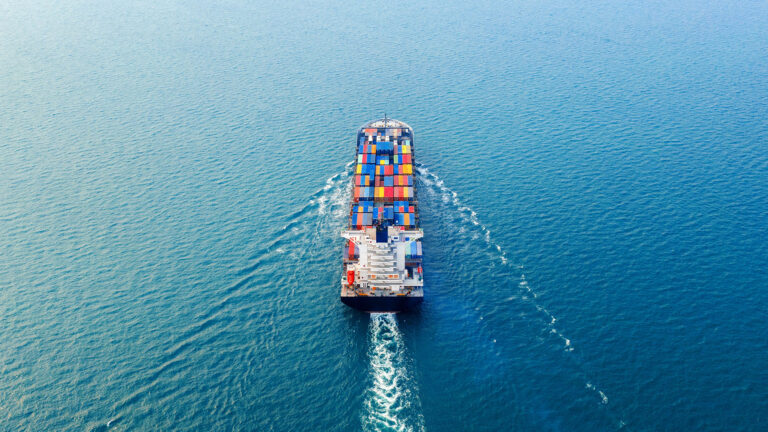Transportation is a vital component of modern life, enabling the movement of people, goods, and services from one location to another.
It plays a crucial role in supporting economic development, facilitating international trade, and connecting communities across the globe. Through various modes such as road, rail, air, and water, transportation systems ensure that raw materials reach manufacturers and finished products arrive at consumers efficiently and reliably.
As a foundation for business operations and daily activities, understanding transportation helps appreciate its impact on society, the environment, and the global economy.
Transportation
Transportation refers to the movement of goods, services, or people from one location to another using various modes like road, rail, air, and sea.
An Overview of Transportation
Transportation refers to the movement of goods, services, or people from one location to another using various modes like road, rail, air, and sea.
It is a fundamental process that underpins economic development and international trade by enabling the efficient distribution of raw materials and finished products.
Transportation systems act as the backbone of modern society, supporting business operations and connecting communities through public transportation networks.
The process of transportation involves managing logistics to ensure timely delivery, reducing costs, and improving customer satisfaction by meeting or exceeding customer expectations.
Transportation networks facilitate access to essential services and opportunities, making them critical to social and economic well-being.
Types of Transportation
Transportation encompasses various modes, each suited to different needs based on distance, cargo type, and urgency.
Road Transport

This mode uses trucks and other motor vehicles to deliver goods over short to medium distances. Road transport connects production sites, warehouses, and end users, offering flexibility and door-to-door service. However, it can contribute to congestion and environmental pollution, impacting road users.
Rail Transport

Rail transport moves bulk and container cargo over medium to long distances via scheduled services on fixed rail infrastructure. Trains are energy-efficient for large quantities and long distances, making rail a vital mode for freight transport. Railways require terminals for loading, unloading, and transfer to other modes.
Water Transport

Including inland waterways and maritime shipping, water transport is ideal for moving large volumes of goods over long distances. It relies on ports and navigable routes to connect producers and consumers. Water transport is cost-effective and has a lower environmental impact compared to road and air transport.
Air Transport

Air transport provides fast and efficient movement of goods over long distances, often used for high-value or time-sensitive cargo. Although it offers speed, air transport tends to have higher costs and greater greenhouse gas emissions compared to other modes.
Human-powered transport, such as cycling and walking, plays a role in sustainable transport, especially for short distances. Emerging technologies like connected vehicles and electric vehicles are transforming transportation, aiming to improve safety, efficiency, and environmental performance.
Importance of Supply Chain Management
Supply chain management (SCM) is crucial for optimizing the end-to-end process from production to delivery. SCM enhances efficiency by coordinating the movement of raw materials, finished products, and information within the supply chain. It involves tracking product location and movement to ensure timely and efficient delivery, reducing delays and costs. Completing key steps such as import customs clearance completed plays an essential role in keeping goods moving smoothly across borders.
Integrating technologies such as total asset visibility (TAV) enables businesses to monitor assets globally, improving logistics and transportation management. Effective SCM results in improved customer satisfaction and provides a competitive advantage by meeting customer expectations and adapting to market demands.
Supply Chain
A supply chain is a network of organizations, people, and activities involved in producing and delivering a product or service. It encompasses the movement of goods from one location to another using various modes of transport and logistics solutions.
Coordinating and optimizing the flow of goods, services, and information from raw materials to end users is essential for reducing costs and enhancing customer satisfaction. A well-managed supply chain enables businesses to respond quickly to changing customer needs and maintain competitiveness in the market.
Modes of Transportation
Freight transport plays a vital role in economic development and international trade by moving goods via road, rail, air, or sea. Sustainable transport strategies are increasingly important to reduce greenhouse gas emissions and preserve natural resources.
Modal shift, which involves transferring freight from road to more sustainable modes like rail or water, is promoted to mitigate environmental impacts. High-speed rail and emerging technologies aim to improve the efficiency and sustainability of transportation systems.
Water transport remains an efficient mode for moving large quantities of goods over long distances, offering cost and environmental advantages. Road transport, while flexible and widely used, can contribute to congestion, air pollution, and increased road safety concerns.
Understanding Transportation
Understanding transportation requires recognizing its critical role in economic development, international trade, and business operations. Transportation systems are complex, involving multiple modes and logistics to move goods and people efficiently.
Effective transportation management reduces costs, improves delivery times, and enhances customer satisfaction. Transportation connects communities, providing access to essential services and opportunities, thereby supporting social inclusion and economic participation.
The movement of goods and people from one location to another involves careful planning and coordination across various modes and logistics networks to ensure smooth operations.
Transportation and Sustainable Development
Sustainable development is integral to the future of transportation, focusing on reducing greenhouse gas emissions and preserving natural resources. Emerging technologies such as connected vehicles and electric vehicles are being developed to enhance the efficiency and sustainability of transportation systems.
Transportation networks support economic development and poverty reduction but can also cause environmental degradation and social marginalization if not managed responsibly. Sustainable transport strategies, including modal shift and logistics optimization, help mitigate these negative impacts.
High-speed rail and other modern transportation modes contribute to reducing greenhouse gas emissions and conserving natural resources, aligning with global climate change goals.
Further Information
Further information on transportation and supply chain management is available through academic journals, industry reports, and digital platforms. Publishers like Cambridge University Press offer resources including books and online courses on transportation and logistics.
Transportation and logistics companies provide practical insights into the movement of goods and people, while government agencies and industry associations offer guidance on regulations, standards, and best practices.
Conclusion and Future Outlook
Transportation plays a critical role in economic development, international trade, and business operations by enabling the movement of goods and people using various modes and logistics. The future of transportation will emphasize sustainable transport strategies, emerging technologies, and optimized logistics to reduce greenhouse gas emissions and preserve natural resources.
Effective transportation management will remain essential for businesses to stay competitive and responsive to changing customer expectations. The adoption of electric vehicles, high-speed rail, and other advanced modes will continue to improve the efficiency and sustainability of transportation systems.
As urbanization and globalization progress, transportation and supply chain management will become increasingly important, necessitating innovative solutions and strategies to address future challenges.
Frequently Asked Questions (FAQ)
What is transportation?
Transportation refers to the movement of goods, services, or people from one location to another using various modes such as road, rail, air, and sea. It is essential for economic development, international trade, and connecting communities.
Why is transportation important for businesses?
Transportation supports business operations by enabling the efficient delivery of raw materials and finished products. Effective transportation management reduces costs, improves delivery times, and enhances customer satisfaction.
Q3: What are the main modes of transportation?
The primary modes include road transport, rail transport, water transport, air transport, and human-powered transport. Each mode has unique advantages depending on distance, cargo type, and urgency.
How does transportation impact the environment?
Transportation contributes to greenhouse gas emissions and pollution. Sustainable transport strategies, such as modal shift to rail or water and the adoption of electric vehicles, help reduce environmental impacts.
What is supply chain management in relation to transportation?
Supply chain management coordinates the movement of raw materials, products, and information across the supply chain. It optimizes transportation to ensure timely delivery, reduce costs, and meet customer expectations.
What is modal shift?
Modal shift involves transferring freight from less sustainable modes like road transport to more sustainable options such as rail or water transport, aiming to reduce environmental impacts.
How are emerging technologies influencing transportation?
Technologies like connected vehicles and electric vehicles are improving safety, efficiency, and sustainability in transportation systems, shaping the future of mobility.
Can you provide an example of transportation in business operations?
A manufacturing company might use trucks to deliver finished products to warehouses and then rail to transport goods over long distances, optimizing costs and delivery times within the supply chain.
What is tonne kilometres?
Tonne kilometres measure the transport of one tonne of goods over one kilometre, used to quantify freight transport volumes and efficiency.
How does public transportation benefit communities?
Public transportation connects people to jobs, education, and essential services, promoting social inclusion and reducing traffic congestion and pollution.


